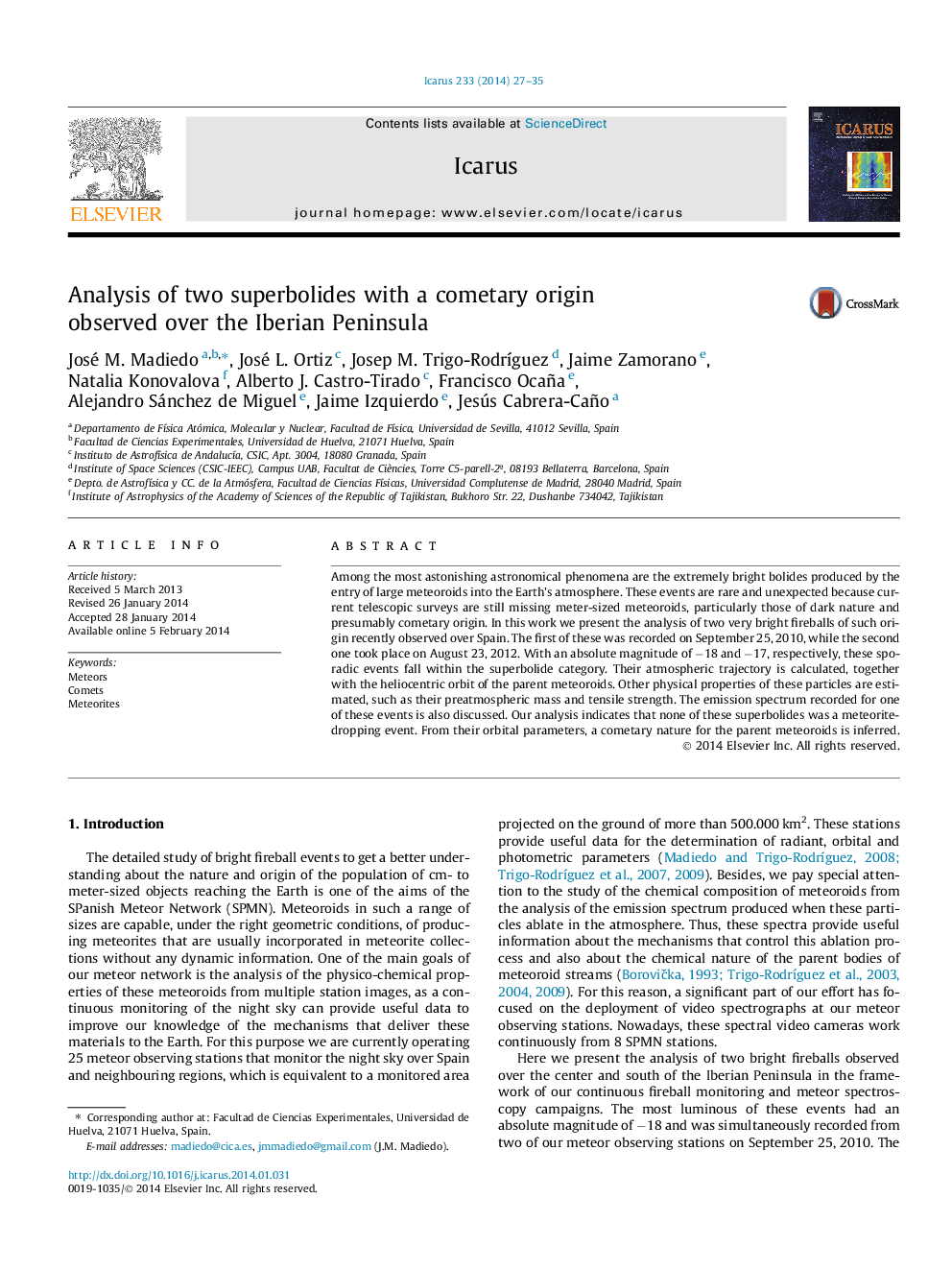| Article ID | Journal | Published Year | Pages | File Type |
|---|---|---|---|---|
| 8138241 | Icarus | 2014 | 9 Pages |
Abstract
Among the most astonishing astronomical phenomena are the extremely bright bolides produced by the entry of large meteoroids into the Earth's atmosphere. These events are rare and unexpected because current telescopic surveys are still missing meter-sized meteoroids, particularly those of dark nature and presumably cometary origin. In this work we present the analysis of two very bright fireballs of such origin recently observed over Spain. The first of these was recorded on September 25, 2010, while the second one took place on August 23, 2012. With an absolute magnitude of â18 and â17, respectively, these sporadic events fall within the superbolide category. Their atmospheric trajectory is calculated, together with the heliocentric orbit of the parent meteoroids. Other physical properties of these particles are estimated, such as their preatmospheric mass and tensile strength. The emission spectrum recorded for one of these events is also discussed. Our analysis indicates that none of these superbolides was a meteorite-dropping event. From their orbital parameters, a cometary nature for the parent meteoroids is inferred.
Keywords
Related Topics
Physical Sciences and Engineering
Earth and Planetary Sciences
Space and Planetary Science
Authors
José M. Madiedo, José L. Ortiz, Josep M. Trigo-RodrÃguez, Jaime Zamorano, Natalia Konovalova, Alberto J. Castro-Tirado, Francisco Ocaña, Alejandro Sánchez de Miguel, Jaime Izquierdo, Jesús Cabrera-Caño,
